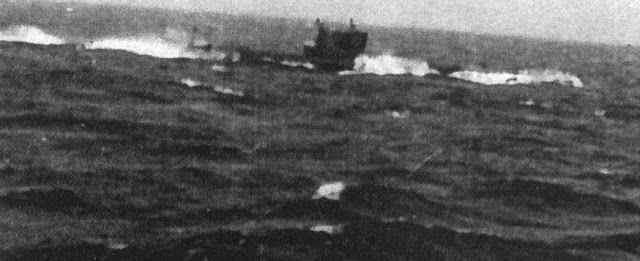 |
| Figure 1. Equipment in the far end of Skeena’s wireless office. A medium frequency transmitter sits at left with its coils above. An HRO receiver is at right. |
 |
| Figure 2. CM-11 transmitter-receiver. |
 | |||
Figure 3. Marconi MSL-5 receiver used in Skeena for receiving messages broadcast from shore stations on 105 or 107 Kc/s. |
 |
Figure 4. FR-12 transmitter-receiver, used largely on the convoy wave of 2410 Kc/s for radio-telephone communication between escorts. |
 |
Figure 6. PV500 transmitter used for transmitting messages ship-to-shore on such frequencies as: 4740, 6300, 8290 and 12685 using morse. |
 |
| Figure 7. Royal Navy submarine off the coast of Nova Scotia |
 |
Figure 8. Riley leaning on iced-up A gun aboard Skeena, December 1942. |
 |
Figure 9. Leading Telegraphist Fred Ross, Skeena. The photo was taken using sunlight shining through the port hole. |
 |
Figure 10. Telegraphist Tom Clegg, Skeena. |
 |
Figure 11. Coders Bruce Witherspoon and Ritchie Seath, Skeena 1943. Ritchie lost his life when Skeena went on the rocks at Iceland in October 1944. |
 |
Figure 12. Telegraphist George Godsall, Skeena 1943. |
 |
Figure 13. Telegraphists Allan Riley and Frank Hibbs, Skeena, Oct 1942. |
 |
Figure 15. St. Hyacinthe W/T students operate a portable radiotelephone set. L to R: Bruce Stevenson, Kimberley BC, J.R. Walker, Toronto ON, and Charles Cannon, Windsor ON. |
 |
Figure 16. Wireless Telegraphy students copying plain language morse of SBX (Standard Buzzer Exercise) at St. Hyacinthe. |
 |
Figure 17. Ratings at St. Hyacinthe are restoring books to the shelves in the Confidential Book office. |
 |
Figure 18. Wrens wireless telegraphy class copying morse on typewriters, obviously a much better method than pushing a pencil. |
 |
Figure 20. The ship’s company doubling to “divisions” at St. Hyacinthe. Wrens can be seen streaming from behind the building at the top. |



